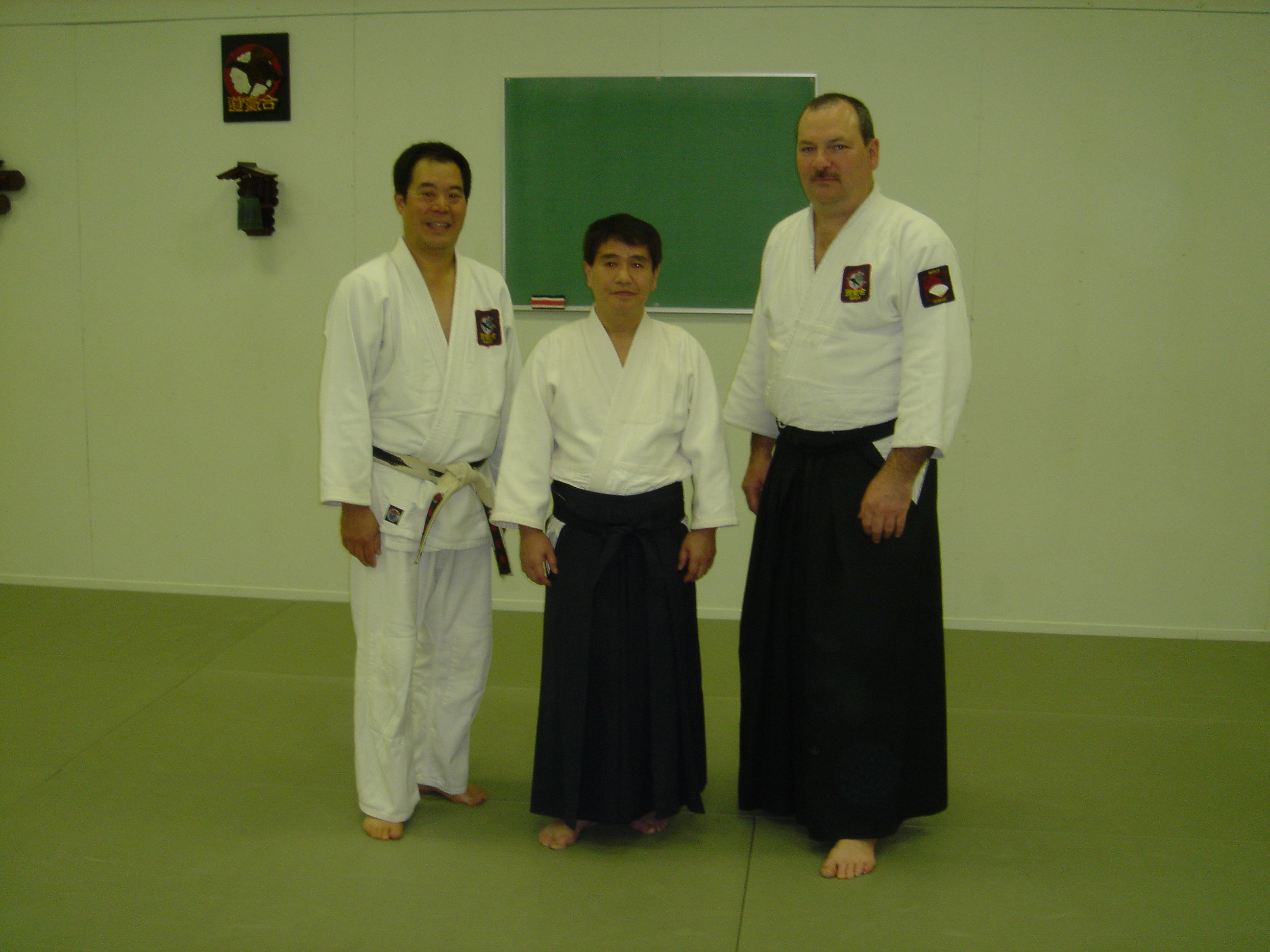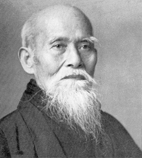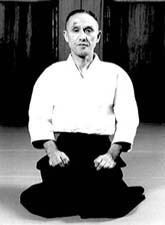
| |
|
|
|

|

|

|
Aikido
(合気道)
| |
 |
|
| |
Schoon Renshi with Yasuhisa Shioda Kancho, and
Kevin Blok Kyoshi, 2008 |
|
“Aikido is the principle of nonresistance. Because it is nonresistant it
is victorious from the beginning. Those with evil intentions or
contentious thoughts are instantly vanquished. Aikido is invincible
because it contends with nothing”
- O Sensei Morihei Ueshiba, founder of Aikido |
 |
Aikido is a martial art that can be traced back to Aiki-jujitsu, a form of
lethal self-defence and hand-to-hand combat in feudal Japan. Morihei Ueshiba
(1883-1968, pictured above) became a recognized master of Aiki-jujitsu and other
arts. He also believed in peace and harmony and created a style of Aiki-jujitsu
to assist his own spiritual and physical development. The result was modern
Aikido
|

Gozo Shioda Sensei (1915-1994, pictured left) was Ueshiba's top student and a
live-in apprentice for nine years before opening his own dojo, which he named
the Yoshinkan. "Yo" means cultivating, "Shin" means mind or spirit and "kan"
means house. Literally translated, Yoshinkan means "house of cultivating the
spirit." | |
Aikido is not a conventional fighting
art. It is non-competitive and non-violent. Using joint locking techniques
and throwing techniques, Aikido develops the ability to harmonize with, and thus
redirect, opposing forces. The goal is to break an opponent's balance using
timing and control rather than strength. With the development of basic
techniques Aikido provides a very powerful means of self-defense without undue
aggression. Through regular training comes confidence, mental focus, and
composure.
The world headquarters for Yoshinkan
Aikido is located in Tokyo. In Japan, Yoshinkan Aikido is taught in schools and
universities and to the Tokyo Riot Police, female police officers and other
special groups. The style is recognized worldwide and is established in
numerous countries.
|
|
|
|